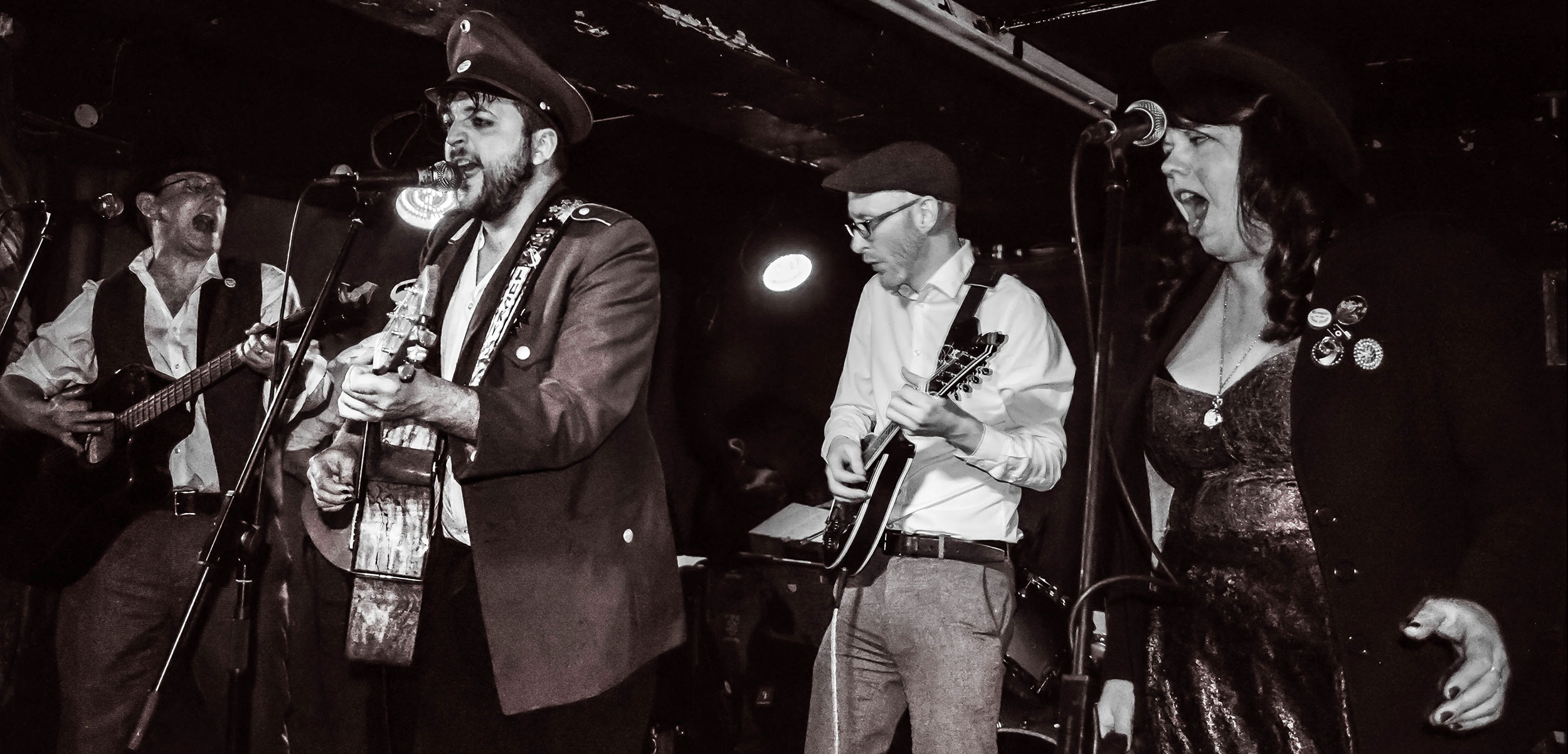The Sea Shanty Revival
Black humor and familiar tunes make for deck-stomping good times.
Article body copy
Hoisting sails or weighing anchor takes teamwork, and 18th- and 19th-century-tall-ship sailors kept everyone pulling together with music: specifically, sea shanties. Shanties (likely from the French chanter) are traditional work songs that created a steady rhythm for group tasks and helped instill a sense of camaraderie among motley crewmen forced to share close quarters and grinding duties for months on end. Preserved largely by folklorists, the shanty’s popularity has crescendoed in recent decades, if film and video game soundtracks, radio charts, and festival attendance are any indication. Meet five contemporary bands giving new “sea legs” to the genre.
Pressgang Mutiny
“Randy Dandy-O”
The five lads of Pressgang Mutiny sing a cappella with authentic working tempos. “Randy Dandy-O” is a traditional “capstan shanty,” suited to trudging around and around, pushing capstan levers to raise or lower the anchor. The capstan shanty’s call-and-response structure meant a “shantyman” led while his shipmates joined in for the refrain, enabling a sense of man-to-man connection.
“Randy Dandy-O” by Pressgang Mutiny
The Johnson Girls
“Fire Down Below”
The Johnson Girls are named for a traditional shanty containing the lyrics “Them Johnson girls, is a mighty fine girls.” In their hands, classic shanties take on new meaning, bringing female camaraderie to a traditionally fraternal genre. Folk-music legend Pete Seeger said of their powerful voices, “I didn’t know women could sing like that!”
“Fire Down Below” by The Johnson Girls
Mechanicy Shanty
“Eliza Jane”
Dozens of shanty festivals a year “shiver the timbers” of an unlikely country: Poland. The genre’s surprising popularity there goes back to the 1980s, when youthful rebels embraced shanties as antiestablishment. But rebels grow up and the genre has too, morphing into family-friendly entertainment. Mechanicy Shanty, a fixture on the festival circuit, is a fan favorite with its danceable tempos and bluegrass-y banjo. The members tap into shanties’ connective power by writing new Polish compositions and translating traditional English lyrics into Polish to encourage convivial crowd sing-alongs.
“Eliza Jane” by Mechanicy Shanty
The Trongate Rum Riots
“Nelson’s Blood”
Adapted from a black spiritual—brought on board by crew members of African descent—“Nelson’s Blood” (a euphemism for rum) boisterously celebrates food, drink, and women. The Trongate Rum Riots, from Glasgow, Scotland, adds a bassline and backbeat absent during the age of sail but remains true to the shanty’s dark humor and message of fellowship during economic hardship. “I love the darkness in them,” says frontman Darren Slevin. “Maybe we all sometimes feel like we’re on a sinking ship!”
“Nelson’s Blood” by The Trongate Rum Riots
The Fisherman’s Friends
“No Hopers, Jokers and Rogues”
For more than 15 years, the nine members of the Fisherman’s Friends—real-life coast guards, search-and-rescue boatmen, and fishermen—from Port Isaac, Cornwall, performed as amateurs. They met regularly at the local quayside to sing, drink beer, and catch up. Their joyous sound caught the ear of a visiting music-industry bigwig, leading to chart-level popularity. Written in 2010 but inspired by historical shanties, “No Hopers, Jokers and Rogues” is another example of a song that is helping the shanty become a living tradition once more, connecting seafarers and music lovers past and present.
“No Hopers, Jokers and Rogues” by The Fisherman’s Friends

